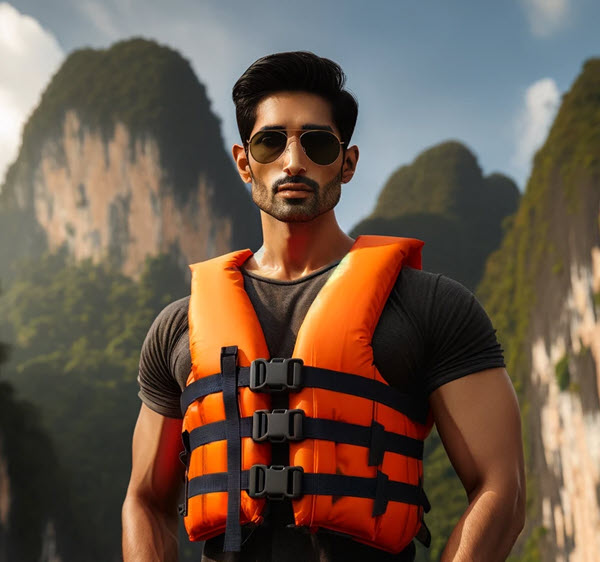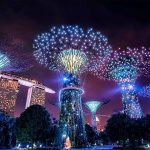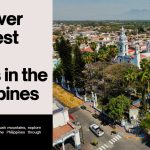Exploring the Philippines through the lens of a drone offers a breathtaking perspective that’s hard to match. From the stunning rice terraces of Banaue to the crystal-clear waters of El Nido, the country is a treasure trove of spectacular drone photography spots. We’re here to guide you through some of the most photogenic locations where you can send your drone soaring into the sky for that perfect shot.
The Philippines’ diverse landscape, with its unique blend of natural wonders and vibrant cities, provides endless opportunities for drone enthusiasts. Whether you’re a seasoned photographer looking to capture the country’s beauty from a new angle or a hobbyist eager to explore, we’ve got insider tips to make your aerial photography adventure unforgettable. Join us as we dive into the top drone photography spots in the Philippines, each offering its own unique charm and challenges.

Top Drone Photography Spots in the Philippines
The Philippines, with its breathtaking landscapes, offers numerous spots ideal for drone photography. Here are some top locations:
- Palawan – Renowned for its crystal-clear waters and dramatic limestone cliffs, particularly around El Nido and Coron. These areas provide stunning aerial views of lagoons, hidden beaches, and underwater ecosystems.
- Batanes – Offers dramatic scenery with its rolling hills, traditional Ivatan houses, and rugged coastlines. The unique landscape of Batanes looks especially mesmerizing from above.
- Chocolate Hills of Bohol – A geological formation of at least 1,260 hills spread over an area of more than 50 square kilometers. The almost symmetrical shapes and varying sizes of the hills make for an intriguing aerial shot, especially during the dry season when the hills turn brown.
- Siargao Island – Known as the surfing capital of the Philippines, Siargao also boasts incredible landscapes of coconut palm trees, white sandy beaches, and clear blue waters, making it perfect for aerial photography.
- Banaue Rice Terraces – Often referred to as the “Eighth Wonder of the World,” the ancient terraces carved into the mountains of Ifugao are a sight to behold from above, showcasing the incredible ingenuity of the local people.
- Mayon Volcano, Albay – The perfect cone shape of this active volcano provides a stunning backdrop for aerial photos, especially when contrasted with the surrounding landscapes of Legazpi City.
- Kawasan Falls, Cebu – The turquoise waters of Kawasan Falls, surrounded by lush greenery, create a magical setting for drone photography.
- Calaguas Islands – Known for their pristine beaches and crystal-clear waters, the Calaguas offer untouched natural beauty that looks spectacular from a bird’s-eye view.
Rice Terraces of Banaue: A Majestic Aerial View
Exploring the Philippines from above reveals some of the most breathtaking landscapes in the world, and the Rice Terraces of Banaue are no exception. Often referred to as the “Eighth Wonder of the World”, these terraces are a testament to the ingenuity of the Ifugao tribes over 2,000 years ago. Carving these terraces into the mountains of Ifugao with minimal modern equipment, they’ve managed to create an irrigation system that’s both effective and sustainable.

Flying a drone over the Banaue Rice Terraces offers a unique perspective on this UNESCO World Heritage site. From an aerial viewpoint, the vastness and the intricate patterns of the terraces become even more apparent. They stretch as far as the eye can see, with the lush greenery presenting a vivid contrast against the earthy tones of the mountain soil. Early mornings are particularly magical as the terraces are often shrouded in a soft, gauzy mist that burns off with the rising sun, creating a surreal landscape that’s a dream for drone photographers.
For drone enthusiasts looking for the optimal time to capture these iconic terraces, the best months are from April to May and from October to November. During these months, the weather is more predictable, and the rice paddies are at their greenest, providing a stunning canvas of varying shades of green.
It’s crucial for drone photographers to be mindful and respectful of the local community and the environment when capturing the beauty of the Banaue Rice Terraces. Ensuring that drones do not disturb the tranquility of the area and adhering to local regulations will make for a fulfilling and respectful photography experience.
Here are some quick tips for drone photography in Banaue:
- Check Local Drone Regulations: Ensure you’re compliant with local laws.
- Respect the Environment: Be mindful of nature and the local community.
- Plan Your Visit: Aim for the best light conditions, usually during the early morning or late afternoon.
- Safety First: Be cautious when flying your drone, and always keep it in line of sight.
Drone photography in Banaue not only captures the grandeur of the rice terraces but also highlights the harmonious balance between humanity and nature. Through our lenses, we can appreciate and share the beauty of this incredible landscape, preserving it for future generations.
Exploring the Crystal-clear Waters of El Nido
El Nido, a paradise in the Philippines, offers some of the most breathtaking drone photography spots on the planet. Its crystal-clear waters, dotted with majestic limestone cliffs, provide a canvas that seems almost too beautiful to be real. As we delve into this magnificent location, we find that El Nido is not just a haven for beach lovers but also a dream destination for drone photographers.

The Big Lagoon and Small Lagoon are among the must-visit spots in El Nido for drone enthusiasts. Flying over these lagoons, one can capture the stunning contrast between the turquoise waters and the dark, jagged limestone cliffs. It’s a spectacle that can only be fully appreciated from an aerial perspective, making it a top priority on our list.
Our exploration doesn’t stop at the lagoons. El Nido’s Secret Beach, accessible only by swimming through a small opening between rocks, offers a unique opportunity for drone photographers. From above, the hidden beach reveals its full glory, surrounded by towering karst formations. Capturing this secluded paradise from the air allows us to share its beauty with the world, emphasizing the importance of preserving such untouched places.
When planning drone flights in El Nido, it’s crucial to be aware of the local regulations. The local government has established specific zones where drone flying is permitted to protect both the environment and the privacy of individuals.
- Always check with local authorities for the most current guidelines
- Respect no-fly zones to ensure the safety and privacy of others
El Nido’s natural beauty is undeniable, and its endless array of photogenic spots makes it a bucket-list destination for drone photographers. By capturing its landscapes from the sky, we’re not just documenting beauty but also highlighting the need to protect these pristine environments for generations to come.
Capturing the Pristine Beaches of Boracay from Above
Boracay, with its powdery-white sand beaches and crystal-clear waters, is a dream destination for drone photographers aiming to capture the essence of tropical paradise. Our exploration of premier drone photography spots in the Philippines wouldn’t be complete without diving into the stunning vistas that Boracay offers from an aerial perspective.

White Beach, renowned for its breathtaking sunsets and vibrant turquoise waters, stretches over four kilometers and provides a spectacular canvas for drone photography. Early mornings are ideal for capturing the serene beauty of the beach, free from the daytime crowds, allowing the natural charm of the area to shine through our lenses.
Diniwid Beach offers a more secluded environment, perfect for drone photographers looking for untouched natural scenes. The contrast between the rustic cliffs and the clear blue sea creates a mesmerizing effect that’s bound to captivate anyone who sees the footage.
While planning our drone flights, it’s imperative to stay informed about local regulations. The island of Boracay has specific zones where drone flying is permitted, ensuring the safety and privacy of both locals and tourists. It’s our responsibility to adhere to these rules, ensuring our photography adventures contribute positively to the places we visit.
Moreover, the preservation of Boracay’s natural beauty is a priority. As drone photographers, we play a crucial role in advocating for the conservation of these pristine beaches. By showcasing the spectacular beauty of Boracay from above, we can inspire others to appreciate and protect these invaluable natural resources.
Boracay offers some of the most picturesque drone photography spots in the Philippines, with White Beach and Diniwid Beach standing out as must-visit locations. Our commitment to responsible drone flying and conservation can help ensure that these stunning landscapes remain untouched for generations to come.
The Enchanting Beauty of Chocolate Hills in Bohol
When we explore the Philippines through the lens of a drone, the Chocolate Hills in Bohol present an unfathomable opportunity for breathtaking aerial photography. Spread over an area of more than 50 square kilometers, these naturally formed hills are a marvel, numbering between 1,200 to 1,700 depending on the source. What makes the Chocolate Hills truly unique isn’t just their vast number, but their uniform shape and size, creating a seemingly endless vista of undulating green that turns chocolate brown in the dry season—hence their name.
Flying a drone over the Chocolate Hills offers a unique perspective on this geological formation, one that can’t be fully appreciated from the ground. From above, the hills seem to stretch infinitely, each one casting a shadow that adds depth and contrast to the visuals. Early morning flights are particularly magical, as the light haze that sometimes blankets the area adds a dreamy, ethereal quality to the footage or photographs.
To ensure the most captivating shots, we’ve found that timing and weather play critical roles. Here’s a quick rundown:
- Best Time to Fly: Just after sunrise or before sunset, when the light casts long shadows and brings out the textures of the hills.
- Weather Considerations: Avoid rainy days as they can obscure the view and make flying risky. Clear, sunny days are ideal, though a slight overcast can also add a dramatic touch.
For drone enthusiasts and photographers planning to capture the Chocolate Hills, respecting local regulations and privacy is paramount. It’s essential to check with local authorities for any drone flight restrictions. Additionally, considering the environmental impact and ensuring that we do not disturb the natural setting is crucial for preserving the beauty of the Chocolate Hills for future generations to enjoy.
Our journey through the Philippines with drones showcases not just the breadth of natural beauty the country offers but also the unique ways we can capture and appreciate these wonders from the sky. As we continue to explore more destinations, the Chocolate Hills stand out as a testament to the Philippines’ diverse and captivating landscapes.
Flying Over the Bustling Metropolis of Metro Manila
After exploring the serene landscapes and natural beauty of the Philippines, we’re taking our drone photography adventure into the heart of its bustling metropolis, Metro Manila. This region presents a stark contrast to the tranquil scenes we’ve previously captured, offering a vibrant tapestry of life and architecture that’s begging to be explored from the sky.
Metro Manila is a melting pot of culture, history, and modernity. Flying over the city, we’re afforded a unique perspective on its dynamic landscape, from the towering skyscrapers of Makati and Bonifacio Global City to the historic walls of Intramuros. Each area tells a different story, providing us with a variety of breathtaking photographs that capture the essence of the urban Philippines.
- FAA Regulations: It’s crucial to familiarize ourselves with local flight regulations to ensure we’re not infringing on restricted airspaces.
- Time of Day: Catching the golden hours at dawn or dusk can transform a cityscape into a masterpiece of light and shadows.
- Safety and Privacy: Always prioritize safety by keeping our drone within our line of sight and respecting the privacy and comfort of the residents below.
Capturing Metro Manila from above requires not just technical skill but also an eye for the unique rhythms and patterns of city life. The contrast between the old and new, the ordered chaos of traffic, and the pockets of green spaces amidst urban sprawl provide us with endless opportunities to capture the soul of Metro Manila. Whether it’s the rush of cars along EDSA or the tranquil sunset behind the Manila Bay, each shot tells a part of the city’s story.
Understanding the city’s weather patterns can also play a significant role in planning our flights. Clear skies and moderate winds are ideal conditions, ensuring our drones can fly safely and capture crisp images of Metro Manila’s skyline and street life without interruption.

Meet Kein, a young solo adventurer traversing the globe, seeking out the most thrilling experiences. Through this blog, he documents his daring journeys, offering a blend of adventure tales and invaluable tips for like-minded explorers.







